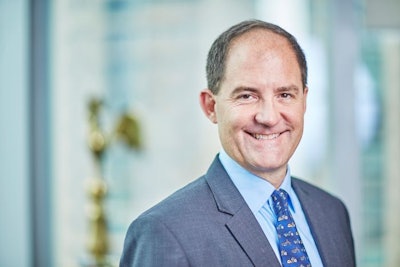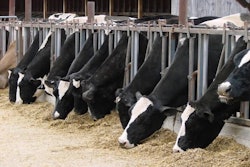
As one of the world’s top 20 poultry producers, Cargill is active in numerous markets around the globe. Austin Alonzo, editor of Watt Poultry USA, spoke to Chris Langholz, group president of Cargill Global Poultry, to discover how the company continues to build its position internationally and align with the varying needs of diverse markets and demands.
ALONZO: What is Cargill’s global goal for its poultry business?
LANGHOLZ: Our goal is to be the best in connecting with consumers. They want to know where their food comes from, and how it impacts the environment, for example, and they want choice.
As you know, consumers in Shanghai are different from the consumers of Guangzhou, for example, and so our goal is really to develop capability around consumer insights and become the best at delivering what consumers need.
ALONZO: Could you elaborate on some of the joint ventures that you’ve entered into over recent years?
LANGHOLZ: As the company is committed to growing globally, we’ve been very active in the last couple of years. We’ve done a combination of joint ventures, acquisitions and strategic partnerships.
Last year, we made an acquisition in Colombia, the acquisition of Pollos Bucanero, a very large acquisition. We opened a new primary processing plant in Nicaragua a few months ago, and entered a joint venture with Japfa in Indonesia for poultry.
About a year ago, also in the Philippines, we entered a joint venture with Jollibee and, a few months ago, we announced, in the U.K., a joint venture with Faccenda to make Avara Foods for fresh chicken.
In terms of partnerships, we’ve recently signed a memorandum of understanding with Alibaba in China, we have a brand in the e-commerce segment.
Our partnership with Alibaba in China is very exciting for us. Alibaba is a leader in the new e-commerce model and, that’s in China today, but that model could be expanding. It gets us into analytics in a deeper way. You can interact with the consumer in China today that is using your product on a real-time basis.
We’ve committed about $1 billion over the last two years to grow in global poultry.
ALONZO: Do joint ventures offer any advantages as far as establishing a foothold in a market?
LANGHOLZ: When you have very aligned interests with your joint venture partner. So yes, if you find great companies, like we have with Faccenda, Japfa and Jollibee, and which are very aligned in terms of the objectives of the venture.
Quite often, one of the partners is a customer of the joint venture, for example, or a key supplier. It’s just a great way to leverage what we do globally as Cargill with a strong local player – it’s a great combination.
ALONZO: Is there a region that is being prioritized over others as far as investment from a corporate standpoint?
LANGHOLZ: We work in Europe, Asia and Latin America. We are growing rapidly, but see strong markets with great fundamentals in Latin America and Asia.
ALONZO: Is that where you expect to see major areas of growth?
LANGHOLZ: Yes. Look at the recent acquisition in Colombia of Pollos Bucanero, and the addition of investment in Nicaragua. Growth will also continue in Asia – we’re adding more capacity in China, Thailand, Indonesia and the Philippines.
ALONZO: Tell me why those are great growth markets.
LANGHOLZ: You have strong GPD and per capita income growth, and the marginal allocation of that household income goes toward food and more protein.
ALONZO: Speaking of China specifically, what has Cargill learned from working in that market?
LANGHOLZ: One of the main takeaways is that China is a very dynamic market. For example, the market of Shanghai is 25 million people, and it is largely different to other parts of China, so we have a model that flexes to different parts of the country.

In a large country such as China, tastes vary from region to region, and Cargill is adapting its approach to cater to different tastes. | Courtesy Cargill
Take flavor profile, for example, a chili pepper from Sichuan may go very well in southern China but it doesn’t work for northern Chinese cuisine, so you really have to adapt your business model. You are seeing more and more regional approaches to China.
ALONZO: How does a company like Cargill manage to implement policies, for example, in the animal welfare spheres, in a world with varying cultures, reporting practices, politics and business standards?
LANGHOLZ: We are committed to animal welfare around the world. On something like antibiotic use, for example, we engage with our chief customers around the world, chief stakeholders and governments to bring their views and approach global best practice. Globally, we recently attained a Tier 2 ranking from the U.K.-based Business Benchmark for Farm Animal Welfare – one of only 17 companies from more than 100 that are in Tier 1 or 2.
ALONZO: Do you think that the whole world will become antibiotic free and, if so, how is Cargill going to adapt to this?
LANGHOLZ: We have to be at the center of the debate for this and we are. The consumers of the world have much more interest in this right now.
We are offering options. We have antibiotic-free and traditional lines. The main thing is engaging with stakeholders around the world, whether it’s the OIE or associations in individual countries, or our key customers. We’re investing significant resources and technologies and innovations to reduce use.
ALONZO: What has Cargill been doing to limit packaging waste?
LANGHOLZ: Our leadership has been very declarative in terms of how we are going to be a leader in sustainable and responsible supply chains. In the specific case of plastics, part of our research work with our chief suppliers is to continue to find advances.
ALONZO: What is Cargill doing to limit the amount of food waste?
LANGHOLZ: We are working with our key customers on increasing awareness around food waste. There’re a lot of joint campaigns to reduce waste in our operations and beyond.
Newly formed Avara takes third spot in UK poultry sector
















